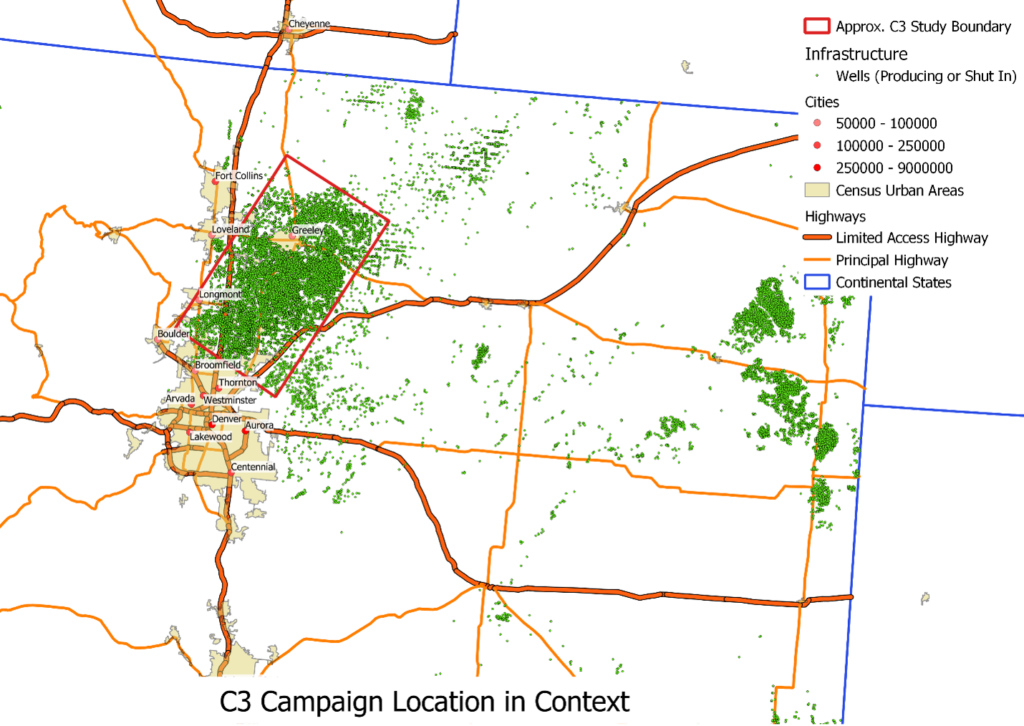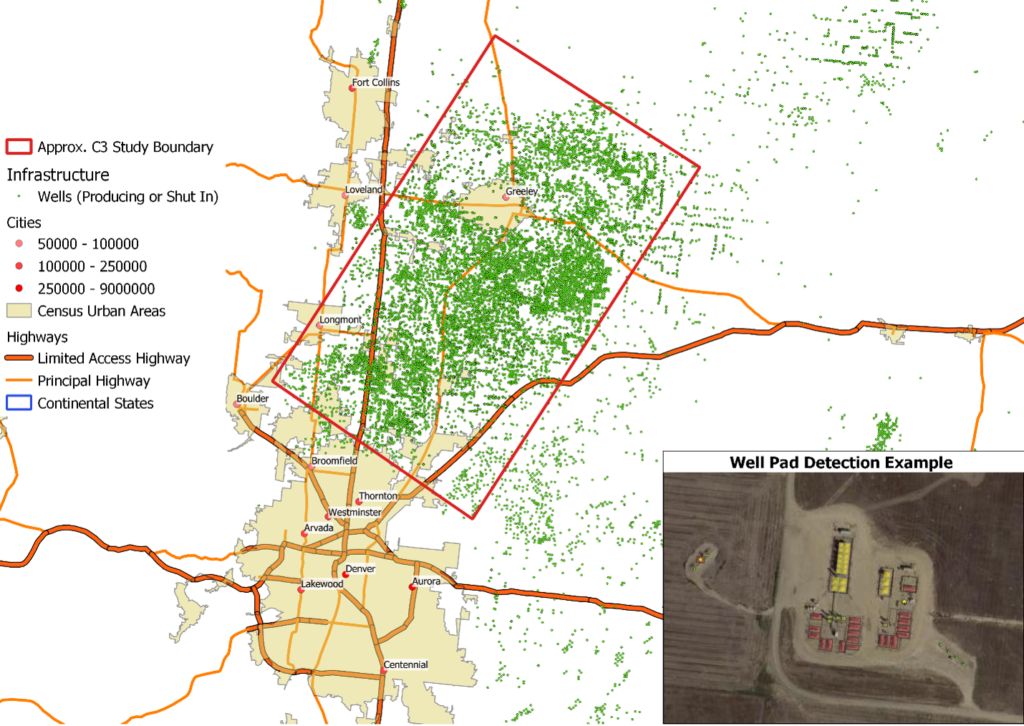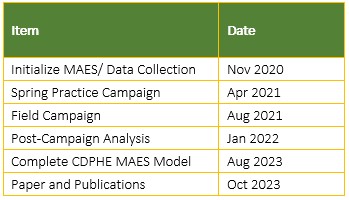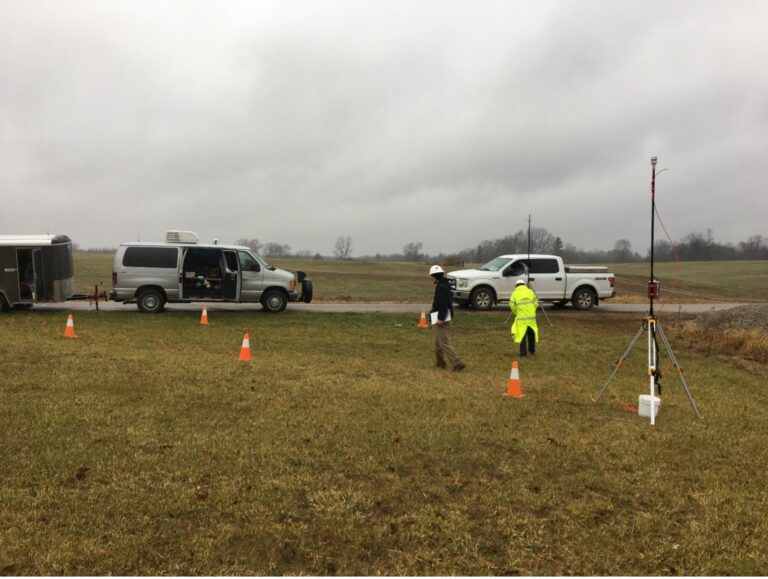C3: Colorado Coordinated Campaign

Summary
CSU has been collaborating with seven partner companies, with five accounting for the majority of production and two midstream operators responsible for a significant portion of gathering and processing facilities in the DJ basin. Together, they have developed prototypical facilities to estimate methane emissions for different types of sites. The study has resulted in a general guidance document, “Prototypical Sites Description,” which includes a classification tree to aid operators in classifying their facilities. Additionally, the study takes into account large emitters in the basin, and on that matter a journal paper entitled “How Often Do Regional Aircraft Emissions Surveys See Known Maintenance Events?” will be submitted for publication in the next few weeks.
Project Overview
The C3 project is a coordinated campaign that will compare two levels of measurements with an advanced emissions model in the Denver-Julesberg oil and gas (O&G) basin in northeastern Colorado.

The study will model emissions from O&G operations using the MEET model. This model will include a new level of detail in emissions models, including spatial distribution, varying gas compositions, and temporal variability. The model will be populated from public and confidential sources in consultation with O&G operators in the basin.
In the middle level … ground-based mobile teams will measure emissions from O&G facilities in the DJ basin during two, 2-4 week field campaigns in May and September ’21. At least three teams will be deployed. Additional teams, as well as next-generation leak detection solutions, are invited to join the field campaign.

At the top level, aircraft-based measurement techniques will be used to quickly scan the entire study area for large emitters using downward looking imagers.
The project will compare all three levels to understand:
- The role of large emitters – their size, frequency of occurrence, and persistence – in basin emissions.
- Methods to construct better inventory models of basin emissions.
While the project will utilize experience from the successful Fayetteville and Barnett coordinated campaigns, this coordinated campaign will be unique in several ways. First, the project will focus measurement attention on understanding the least-understood portion of the emissions spectrum – large emitters – using a unique combination of aircraft and ground measurements, coupled with unique ‘dynamic’ activity data. Second, the project will be the first to use the state-of-the-art Methane Emissions Estimation Tool (MEET) to model methane and VOC emissions with both spatial and temporal resolution.
Objectives:
- Prototypical Facilities and Emission Estimation: The main objective is to create a set of prototypical facilities representing various equipment and operating conditions in the DJ basin. Partner companies identify the most suitable prototypical site for each of their facilities, enabling the estimation of methane emissions based on these models. The project aims to validate the accuracy of these models by comparing the estimated emissions with data reported by companies to the CDPHE GHG reporting program.
- Guidance Document and Future Applications: Another objective is to develop a guidance document, “Prototypical Sites Description,” shared among all participants and CDPHE, to assist operators in classifying their facilities. While currently focused on the DJ basin, the project considers the potential application of the classification process in other Colorado basins, like the Piceance.
- MAES Multiplier Considering Large Emitters: The project also aims to analyze large emitters in the basin and include them in the basin model done in MAES to estimate the methane emissions. The drafted paper “How Often Do Regional Aircraft Emissions Surveys See Known Maintenance Events?” involves analyzing University of Arizona aircraft measurements to better understand emissions in oil and gas facilities in the subset of the DJ basin covered by the project.
Schedule

Accomplishments
Draft paper “How Often Do Regional Aircraft Emissions Surveys See Known Maintenance Events?” and development of prototypical sites and guidance document, “Prototypical Sites Description.”
Funding Provided by:
The Mark Martinez and Joey Irwin Memorial Public Projects Fund
CDPHE

